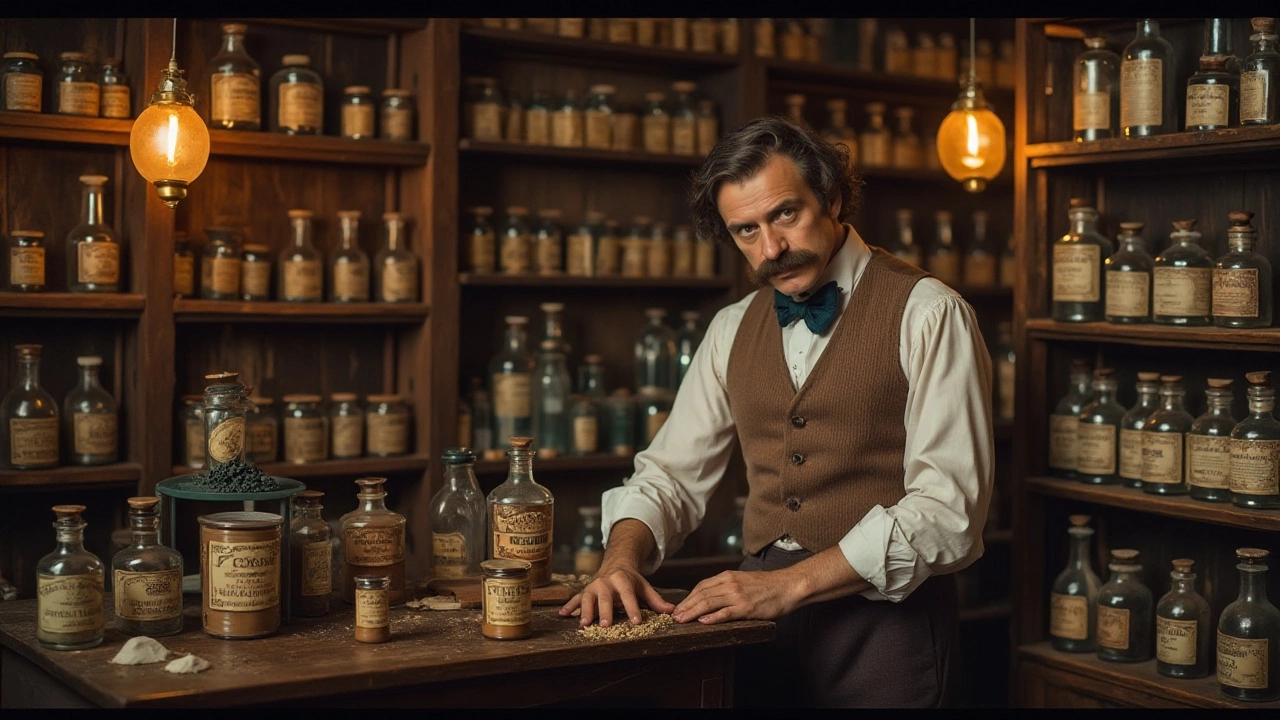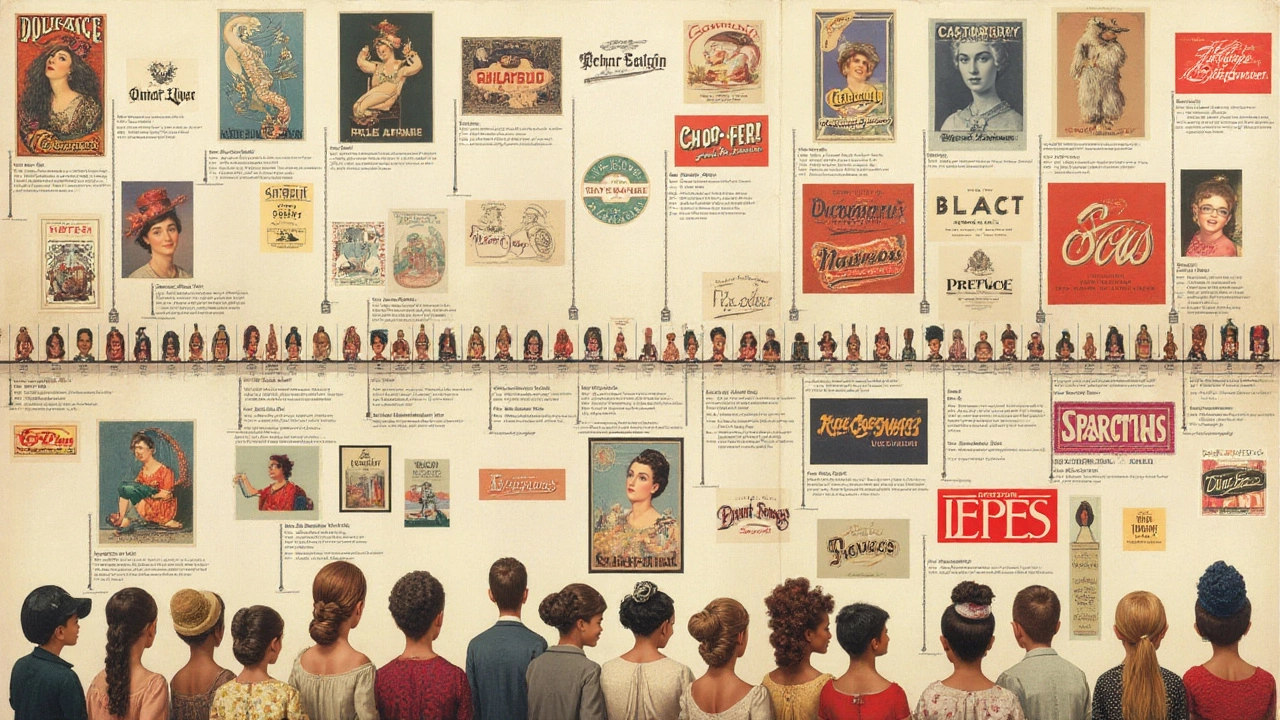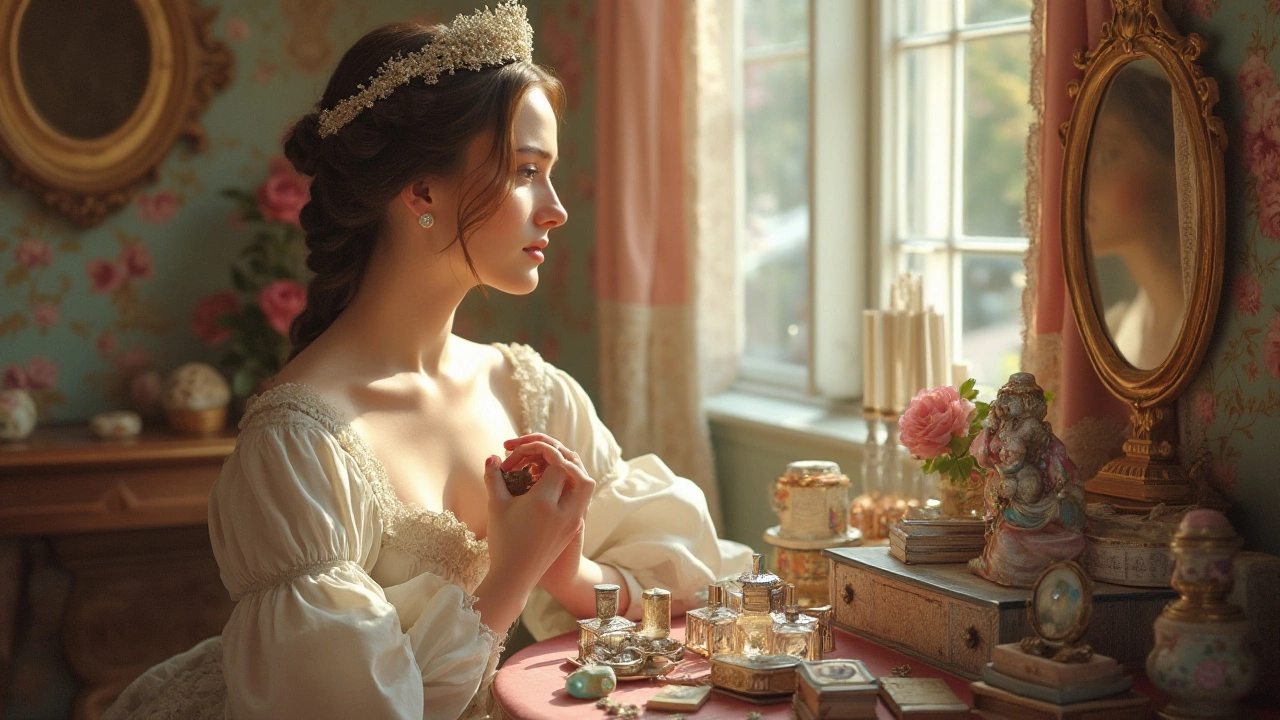
Beauty has always been a significant aspect of human culture, with its history woven deep into the fabric of ancient civilizations. One might wonder about the origins of the cosmetic products we use today, tracing back the roots of some of the world's oldest beauty brands. These companies have not only weathered the sands of time but have also shaped the very essence of the cosmetics industry as we know it.
Long before modern-day beauty giants emerged, early cosmetic companies laid the foundations with simple yet luxurious concoctions. Their stories are filled with innovation and transformation as they've adapted through centuries of change. Exploring this fascinating journey will uncover the rich history behind the brands that first introduced the world to makeup, perfumes, and skincare solutions.
- A Glimpse into the Past
- Trailblazers in Beauty
- Evolution of Cosmetic Brands
- The Legacy of Timeless Products
- Impact on Modern Day Cosmetics
- Finding Your Place in Cosmetic History
A Glimpse into the Past
Exploring the tales of ancient beauty practices takes us on a magical journey back in time. In the earliest days, cosmetics were more than just adornments; they served as cultural symbols, personal identifiers, and even as spiritual tools. Take, for instance, the Egyptians—one of the earliest civilizations known for their exquisite cosmetic practices. They were pioneers in blending natural ingredients to create eye kohl, believed to protect against evil spirits and shield them from harsh sun rays. Visiting their vibrant wall art, you see eyes heavily lined with black, serving as a testament to their bold style choices.
Remarkably, the Romans took a different approach, developing intricate face masks and creams mixing olive oil with beeswax. These beauty concoctions poised them as leaders in early cosmetics manufacturing. Hera, the Greek goddess, represented eternal beauty, and women would emulate her with their morning beauty rituals that often included rose oils and saffron-infused balms. These ancient practices underline the timeless appeal of cosmetics history and its influence across varying cultures.
Of course, the pursuit of beauty was never without its challenges. Many cosmetics used in antiquity were toxic by today's standards, containing ingredients like lead and mercury. Ancient Egyptians, for example, applied a combination of lead-based kohl around their eyes. Though these practices were dangerous, they reflect the deep-rooted tradition and transformation of beauty ideals over centuries. A relevant ancient Egyptian saying goes, "A beautiful thing is never perfect," reminding us that the pursuit of beauty often comes at a cost.
Interestingly, as cosmetics trade developed, merchants transported exotic ingredients on the Silk Road, spreading practices and products across far-reaching lands. That was how *ultramarine blue*, produced from crushing semi-precious stones, traveled to Europe, greatly influencing the beauty regimes of medieval nobility. This growth signified not only the thriving commerce but the rising interest in using cosmetics as markers of social status across societies.
Today, when we decorate our faces with carefully chosen shades and products, we carry with us the whispers of generations past. The history of ancient beauty brands marking the dawn of the cosmetic company era is truly astounding. These stories don't just belong in museums—they're alive in every eye shadow palette and lipstick we own, bonding us to our ancient ancestors. As trends evolve, this intricate tapestry forms an enduring foundation, ever reshaping our perception of beauty.
Trailblazers in Beauty
The history of cosmetics is brimming with pioneering spirits who set the wheels of the beauty industry in motion. Among these, the early innovators who established the world's oldest cosmetic company were not just merchants; they were visionaries who understood the allure of beauty products long before they became mainstream. One of the remarkable names in this arena is Shiseido, a company founded in 1872 in the Ginza district of Tokyo. Initially a pharmacy, Shiseido quickly branched into cosmetics, blending Eastern traditions with Western science. Their Eudermine lotion is one of the first signature products, cherished for its rejuvenating effects. Their approach combined innovation with a respect for heritage, setting a standard for future companies.
Across the globe, in France, L'Oréal arose during the early 20th century as another frontrunner in global beauty. Starting with hair coloration products developed by Eugène Schueller in 1909, L'Oréal expanded its reach and influence phenomenally. Schueller's foresight in scientific research and his philosophy of continuous innovation allowed L'Oréal to capture a broad audience who were eager to access professional-grade beauty products at home. This strategy proved remarkably successful. As L'Oréal promoted the value of beauty products for every woman, it oriented the industry's trajectory toward accessibility and inclusivity.
Max Factor, on another note, altered the course of history for the industry by popularizing makeup during the movie industry's golden years. Max Factor himself coined the term "makeup," creating cosmetics specifically for the film industry, which eventually trickled into the mainstream market. As movies introduced glam icons, so did the desire for their appearance, catapulting the Max Factor brand to fame. "You are not born glamorous; glamour is created," Factor famously stated, encapsulating the power inherent in a cosmetics transformation.
In an industrious attempt to compile the root histories of these brands, one must consider different regional influences, each significant in inspiring and shaping today's trends. During a whirlwind of historical developments, these brands stood out not merely because of products but due to strategic inclusions of cultural elements in formulations and marketing. These early companies embraced global views on beauty, weaving customer desires with technological advancements.
"Beauty begins the moment you decide to be yourself," said Coco Chanel, inspiring generations of cosmetic brands to dare with bold speeches and innovative products while maintaining intriguing simplicity in self-expression.
These bold trailblazers indelibly impacted not only how we perceive beauty but how we engage with products. As they laid a foundation that modern-day brands continue to build upon, their commitment to evolution, customer satisfaction, and daring creativity remains at the heart of successful cosmetics companies worldwide.

Evolution of Cosmetic Brands
The journey through time uncovers the fascinating evolution of cosmetic brands, each era marking a transformative phase in the beauty industry. From ancient Egyptians using crushed beetles for red lips to Cleopatra's use of exotic oils for skincare, the historical significance of cosmetic practices is remarkable. Early evidence of cosmetics can be found in Mesopotamia around 4000 BCE, where both men and women adorned themselves with makeup. Fast forward to the Middle Ages, and the trend of pale skin conveyed wealth and status, leading to the creation of elaborate and, at times, hazardous skin-whitening products. During the Renaissance, beauty ideals continued to evolve, and with them, the formulations and techniques of cosmetics.
It was not until the 20th century that the cosmetics industry truly started to take shape as we know it today. The impact of the industrial revolution cannot be overstated, as it enabled mass production of beauty products that were previously only available to the elite. This era saw the emergence of iconic brands such as L'Oréal, founded in 1909, which revolutionized the availability and diversity of hair dyes and other products. During the 1920s, makeup became a tool of empowerment for many women as societal roles were shifting rapidly. Brands started innovating and creating products specifically catered to women's new lifestyles.
The post-war periods marked an era of technological advancements and scientific discoveries that led to the creation of more efficient and safer products. The market expanded internationally, with companies like Estée Lauder and Revlon gaining unprecedented popularity. They introduced the idea of beauty for everyone, emphasizing the everyday person's right to feel glamorous. Marketing strategies also began to shift, using the emerging power of television and magazines to reach broader audiences.
As we entered the 21st century, globalization, and digitalization transformed the landscape once again. Social media became a powerful tool for both established brands and emerging indie brands. Consumers became more informed and discerning, leading to a demand for transparency and ethical practices in the industry. This opened doors for organic and cruelty-free movements, pushing major companies to reevaluate their approaches. According to a 2022 survey, 60% of consumers prefer brands offering sustainable and ethical products. This shift has led to the development of eco-friendly packaging and vegan formulations.
The evolution of cosmetic brands is a testament to humanity's enduring desire for self-expression and personal enhancement. With each era bringing new trends, technologies, and ethical considerations, the world of cosmetics continues to be an ever-changing kaleidoscope. It's fascinating to imagine what lies ahead for this vibrant industry as it continues to weave history into the future of beauty.
The Legacy of Timeless Products
Many of the oldest cosmetic companies have a treasure trove of iconic products that have remained popular throughout generations. These timeless products are not only a testament to the quality and innovation of the brands but also a reflection of the changing beauty standards and practices over time. Take Guerlain, for example, which was established in 1828 and has since been celebrated for its exquisite perfumes and skincare products. The striking emergence of its Shalimar fragrance in 1925 captivated the world with its luxurious vanilla and jasmine notes, and it continues to be a staple in the fragrance world today. Such legendary products showcase how these brands have managed to maintain relevance while honoring their rich heritage.
Another shining example is the House of Yardley, established in 1770, which began its illustrious journey by supplying the royal courts with lavender scents. This age-old fragrance quickly became synonymous with refined elegance and has been imbued within the ethos of Yardley for centuries. Their dedication to quality and tradition ensures that even today's consumers can enjoy the timeless beauty found in their lavender soaps and perfumes. For many, embracing products from these origins is akin to holding a piece of history in one's hands, wrapped in the elegance and charm of eras long gone. As Coco Chanel famously said, “Fashion fades, only style remains the same.” This quote resonates deeply within these celebrated brands, whose enduring style has surpassed the fleeting trends of each era.
What's striking about these ancient cosmetic companies is their ability to evolve with the times without losing their foundational identity. Their stories are interlaced with tales of resilience, adaptability, and a steadfast commitment to beauty excellence. For instance, L'Oréal, founded in 1909, has consistently innovated in hair and skin products, becoming a global powerhouse by expanding into diverse markets while maintaining a core focus on beauty. Their iconic hair dye formulas are just a fraction of their monumental impact on the beauty industry landscape.Ancient beauty brands like these have managed to thrive by listening to their patrons, embracing cultural shifts, and staying ahead of technological advancements. Their journey offers invaluable insights for today's emerging brands and enthusiasts eager to trace the evolution of beauty. They exemplify how some classic principles, bolstered by modern innovation, can result in a powerhouse legacy that endures through the ages.

Impact on Modern Day Cosmetics
The journey of the oldest cosmetic company from modest beginnings to a pioneering force in the beauty industry is truly impressive. The influence of ancient brands extends far beyond their vintage allure; they have not only introduced revolutionary products but have also set the standard for quality and innovation in the modern market. The legacy of these brands persists through formulas and techniques that continue to inspire today's beauty concoctions. Their enduring impact can also be seen in the fundamental principles they established, such as the importance of natural ingredients, sustainable packaging, and consumer trust. While contemporary cosmetic companies often embrace technological advancements and trends, they owe a debt to the foundational practices laid down by these formative entities.
These trailblazing brands have made a significant mark by keeping their original charm alive, even amidst the enormity of change in the beauty landscape. For instance, the emphasis on using pure, skin-friendly ingredients is a practice that has been adapted and refined by countless new and growing brands. It is a testament to the ideological persuasiveness of these early companies. A remarkable instance of their influence is the continued popularity of certain age-old beauty rituals and home remedies that were first popularized by these pioneering enterprises. The beauty industry today is a mosaic of the old and the new, where ancient wisdom meets modern science.
The obsession with corporate longevity, which these companies exemplify, has also resonated within modern business models. There is a growing fascination with not only how long a company can endure but how it can continually reinvent itself, something the oldest cosmetic companies have successfully achieved. This model of longevity and innovation is increasingly becoming an operational playbook for new entrepreneurs in the cosmetics industry. Additionally, many of these antique brands have garnered loyal customer bases that span generations, proving that authenticity and a commitment to quality never go out of style. Such fidelity demonstrates a significant aspect of consumer psychology, highlighted by trust and heritage.
In the words of renowned beauty historian Madeline Elliott,
"The oldest cosmetics companies are living relics of the past. They not just sell beauty products; they sell a story, a piece of history that resonates deeply with people's innate yearning for authenticity."These companies' products have become more than just tools of beauty—they serve as cultural artifacts enshrining the shifts in societal norms and attitudes about beauty over time. The way consumers interact with and purchase cosmetics today is undeniably tied to their historical antecedents. Ceramic cosmetic jars and ornate vintage perfume bottles still influence packaging designs, creating a bridge between different eras while invoking nostalgic sentiments.
Finding Your Place in Cosmetic History
Exploring the rich tapestry of the world's oldest cosmetic companies invites one to ponder: where do we, as individuals, fit in this grand narrative of beauty? The journey that began centuries ago with crushed gemstones and herbs has blossomed into a multibillion-dollar industry, offering a dizzying array of options for every conceivable preference and skin type. Yet, amidst this vast landscape, finding your niche is akin to discovering your personal chapter in the ongoing saga of cosmetics history.
As you delve into the backgrounds of pioneering brands such as Shiseido, founded in 1872, or the ancient roots of L'Oréal, established in 1909, it becomes evident that these companies have transcended mere product manufacturing. They have become custodians of traditions, continuously adapting and evolving to meet new beauty standards while honoring the past. Their archives are treasures, housing tales of scientific breakthroughs woven with market trends, and of skilled artisans paired with visionary leaders who anticipated the desires of future generations.
For the informed beauty enthusiast, understanding the legacies of ancient beauty brands helps illuminate a path to more meaningful consumer choices. It inspires one to look beyond advertising gloss to evaluate a brand’s historical commitment to quality and innovation. Are modern formulas improving upon the wisdom of yore, or are they veering too far from the authentic essence that first enchanted customers? In this context, discerning consumers discern value in places that might otherwise be overlooked, selecting products that resonate with long-standing cultural influences.
In the words of Helena Rubinstein, an icon herself in the realm of cosmetics:
“There are no ugly women, only lazy ones.”This insight underscores the power of knowledge in enhancing self-expression. To engage deeply with the beauty industry’s origins is to arm oneself with an appreciation for what cosmetics can achieve when considered with care. Embracing this historical perspective transforms everyday beauty rituals into acts of homage, connecting each swipe of lipstick or dab of cream to generations past.
If you're curious to further connect with this illustrious history, consider visiting museums dedicated to beauty's past or engaging in workshops that explore ancient cosmetic techniques. You might uncover how ancient Egyptians used kohl eyeliner or experience firsthand the tactile creations of early 20th-century color palettes. As you gather these experiences, they add richness to your personal collection of beauty knowledge, producing a rewarding sense of place within this enduring narrative of human adornment.